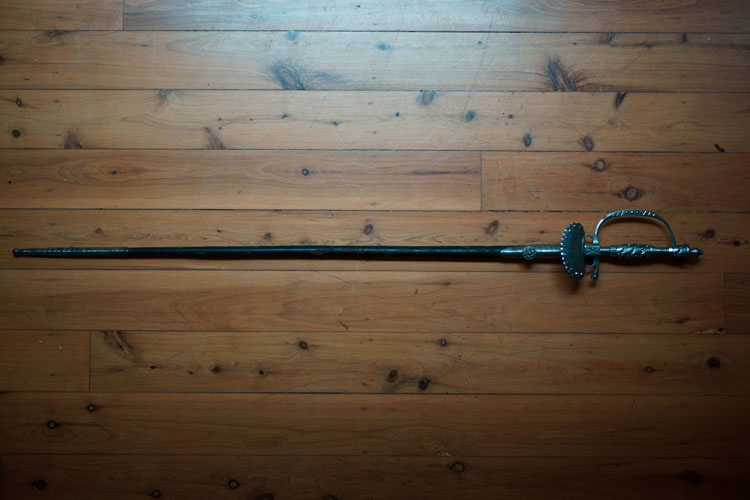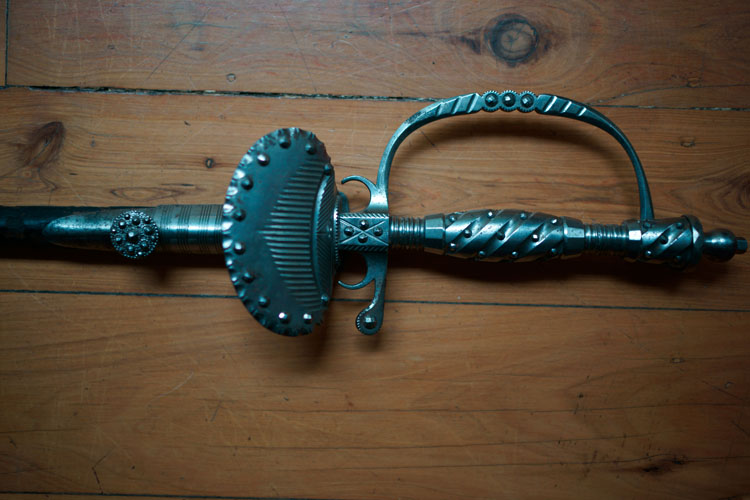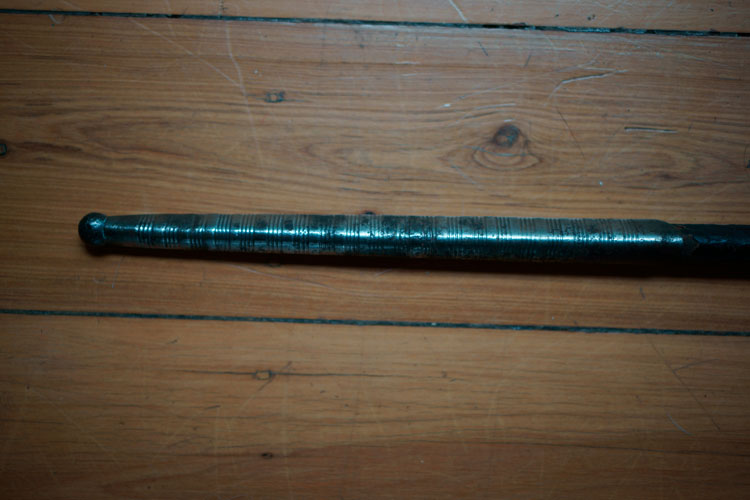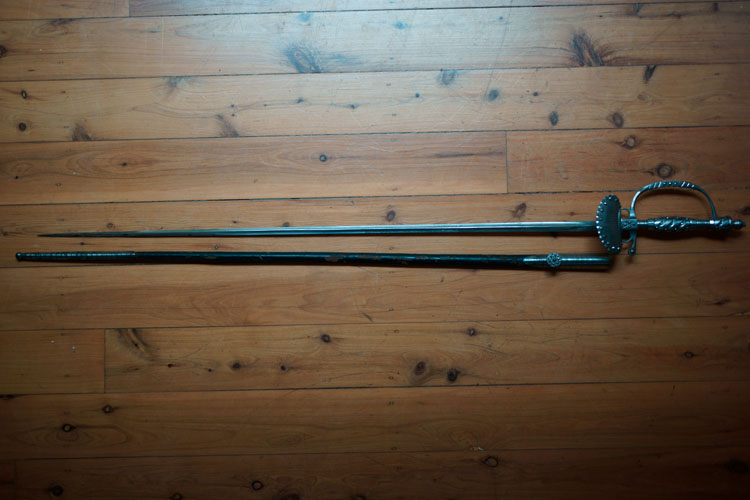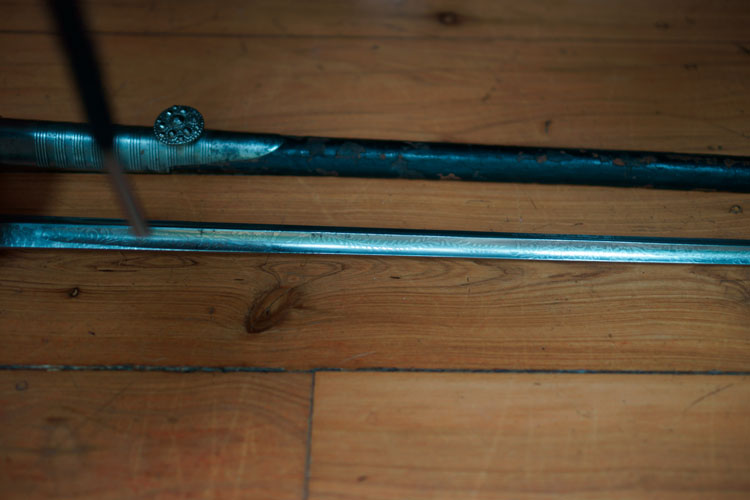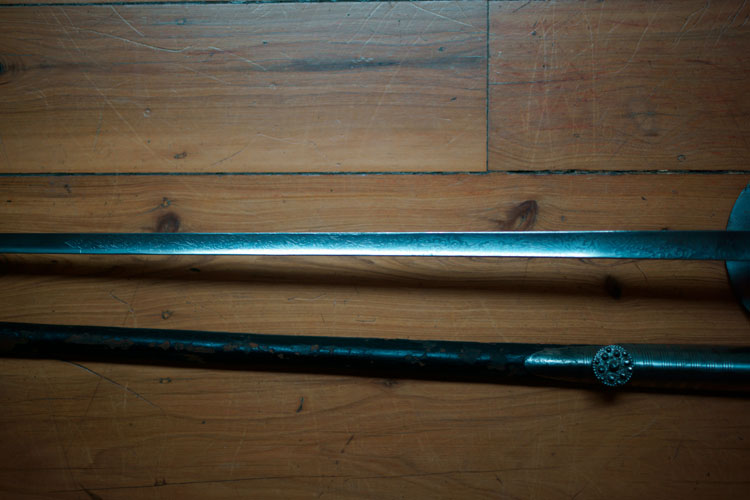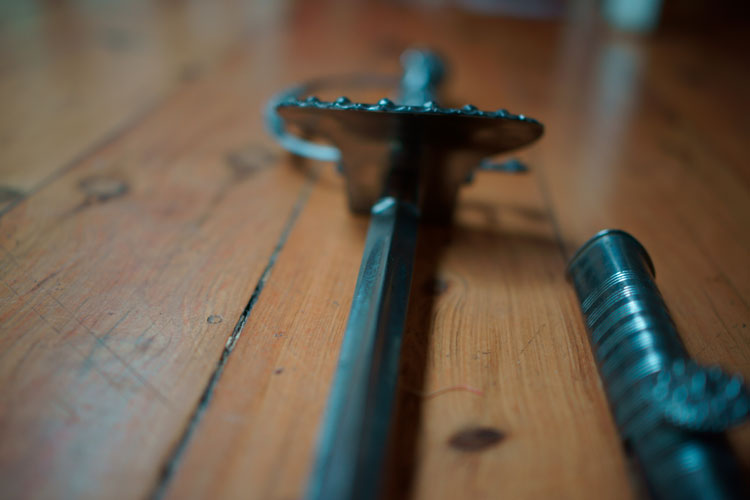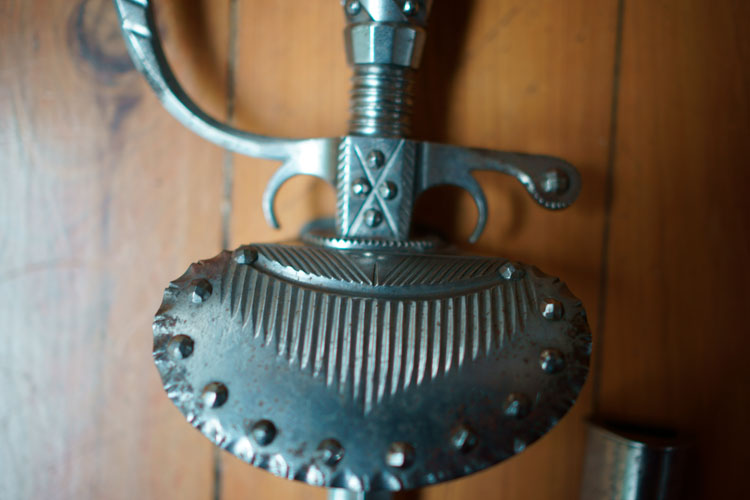The cut steel sword was the official dress weapon of the British royal court during the 19th century, and was described as such: "A formal court sword with a cut-steel hilt and embellishments, with a black scabbard worn with a belt under the waistcoat"
This thus brings us to the design of this weapon: It is a court sword, and as the name implies was intended to be worn at court, and as such is no fearsome weapon, but one of elegance. It weighs only 444 grams, and has a narrow triangular cross section blade which is quite stiff. It balances two inches from the guard, and the blade is nickel coated.
The hilt itself is all steel, cut and polished into shape, and compared to some other period examples is quite simple. That being said, it took a large degree of skill to shape these hilts, and they sold for handsome sums, with many similar such swords selling around 15 pounds, well over 1000 pounds today.
This engraving in fine and detailed on the blade, and the blade is secured with a small hex nut, which I have not removed to check the tang. the scabbard fittings are steel, also cut and polished. The scabbard itself is leather, and has a triangular chape.
The hilt is marked "20", but no makers marks are visible. The fullered or rather hollow ground triangular blade resembles a modern foil or epee blade, and tracks very well in hand. The finger rings are decorative, being too small to use without unusually dainty fingers. There is very mild pitting to the tip of the blade.
This sword is very representative of it's type, with variation between examples largely being of the number of faceted pseudo-diamonds on the hilt. It is a robust and effective way to construct a hilt, however dainty the blade may be.
The condition of the scabbard leaves much to be desired, and I am truly resentful of the time I had the opportunity to purchase a Poole sword of very good condition and missed the auction due to a power outage which lasted nearly a week. Forever more I shall blame bad weather for my misfortunes in seeking antique swords.
APOLOGIES FOR THE BLURRY STRING IN THE PHOTOS - MY CLOTHING GOT IN THE WAY.
NEXT UP: A 1822 British officers sabre,
an Italian 1872 Infantry Officers sword,
and then a 1889 Prussian Life Guards Hussars' Pallasch,
followed by a "Frankenstien" of mismatched parts.
